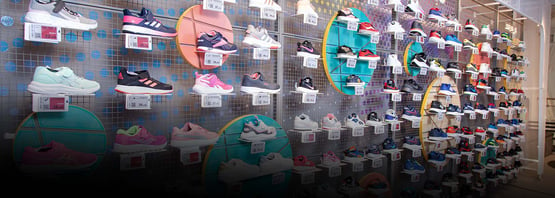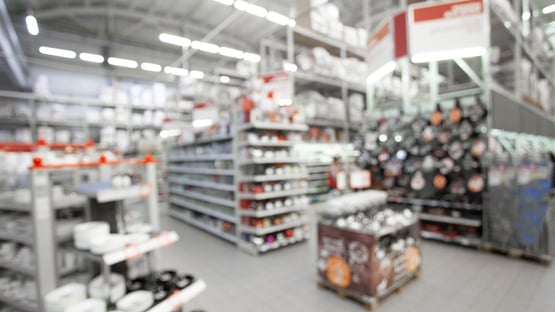Digital retail is no longer confined to websites and smart phone apps, shows Duncan Potter, CMO of Pricer. The new consumer is not just digital-first, they are digital-everywhere and all the time, so their expectations need to be better met in-store as well as online.
The many ways in which customers want help in store no longer converge on the services of a store associate; they are more than happy to self-serve, but they do still want help. Research in 2021 from Pricer revealed that 57% want digital engagement in the aisle to improve CX and inform purchasing decisions. In addition, 65% would be more likely to buy a product in-store when they can easily and clearly access information about the product digitally.
And right now, it looks as though they are not getting all the information and help they need; the research also showed that 57% would like to have more access to product details in addition to pricing, whilst 49% would like more digital signage at the shelf-edge to help inform their buying decisions.

How much help they need does of course depend on the sort of products they are looking for; the Pricer report suggests that getting help is particularly important for complex, high consideration or big ticket items, where shoppers want to be able to self-serve information about the product and its specifications digitally at the point of display. 61% said access to digital product information became increasingly important when shopping for expensive items, while 45% have been put off buying a complex or considered purchase when there wasn’t enough product information available.
Equally, as UK consumers opt to shop more sustainably, with Pricer’s research showing since the start of the pandemic over half (55%) now want to choose local produce in a bid to become more sustainable, 43% of shoppers are willing to pay more for ‘green’ products, but only as long as their sustainable credentials are clearly visible as part of the product display. A further 57% also said they would like to see sourcing and ingredients information more readily available at the shelf-edge digitally.
However, there is a cautionary note to strike where inconsistent information between on- and off-line channels and ‘information overload’ in the aisle can also put shoppers off. Almost half (49%) expressed frustrations that product details at the shelf-edge were inconsistent with the information about the same product on a retailer’s website, and 37% said they had become so overwhelmed by excessive information at the shelf-edge that they abandoned the purchase altogether.
Using digital signage and QR codes at the shelf-edge enables retailers to optimise the customer’s self-service experience in the aisle, allowing them to get all the information they need to inform their buying decision, without over bombarding them. Similarly, with real-time integration between the digital shelf and the retailer’s online offer, consistency of pricing, product spec and promotion can be consistently managed more dynamically to improve CX and drive conversions.
As sporting goods retailer INTERSPORT has found, using digital at the shelf edge to help customers enhances both customer experience and improves efficiency of in-store operations. Each store is independently owned and run, so each aims to offer the best advice, guidance and value for its products and services with an understanding of the local customer and community in mind.
INTERSPORT recognised that manual in-store pricing was becoming a time-consuming task for its employees, with markdowns on goods, such as footwear and trainers, applied manually and often during busy sales periods. This not only led to inefficient price management, but it took store associates off the shop floor and away from serving customers, as Aggelos Stefanou, IT Manager at INTERSPORT Greece, Cyprus and Balkans, explained, “The huge amount of hours spent only on changing the prices, with everything from checking the prices, printing the paper labels and putting everything up in the right place was a big issue for us. We realised that the employees could spend their time better serving our customers and doing other in-store tasks.”
For INTERSPORT, price changes are driven by different factors, such as discounting periods, like Black Friday or seasonal sales, as well as online pricing, digital marketing initiatives and competitors’ campaigns. It wanted to be able to synchronise in-store prices with online activity, allowing it to quickly react and actively manage pricing strategies, while reducing pricing errors or inconsistencies.
The modern ESL solution from Pricer, which delivered around 1,000 SmartTAG HD per store, now provides instant price changes, with pricing now automatically managed in seconds on a daily basis. This not only ensures accuracy and consistency of prices across its sales channels, but it also frees up store associates’ time so that they could focus on value-added tasks, serving customers and enhancing the in-store experience for shoppers; it estimates that every store saves one month of shop staff’s working hours per year thanks to the solution.
The ESLs are also enhancing the experience at the shelf-edge, as they feature a QR code which benefits both store staff and customers. Scanning the code, store associates have real-time visibility of stock, allowing them quickly see what inventory is available and in which size, while shoppers can benefit from endless aisle capabilities, using the QR code to find out more information about the product on display, or place an order should the size or model they are looking for be sold out in store.
This article was originally published on February 8, 2022 in Retail Focus.
Published on February 10, 2022



